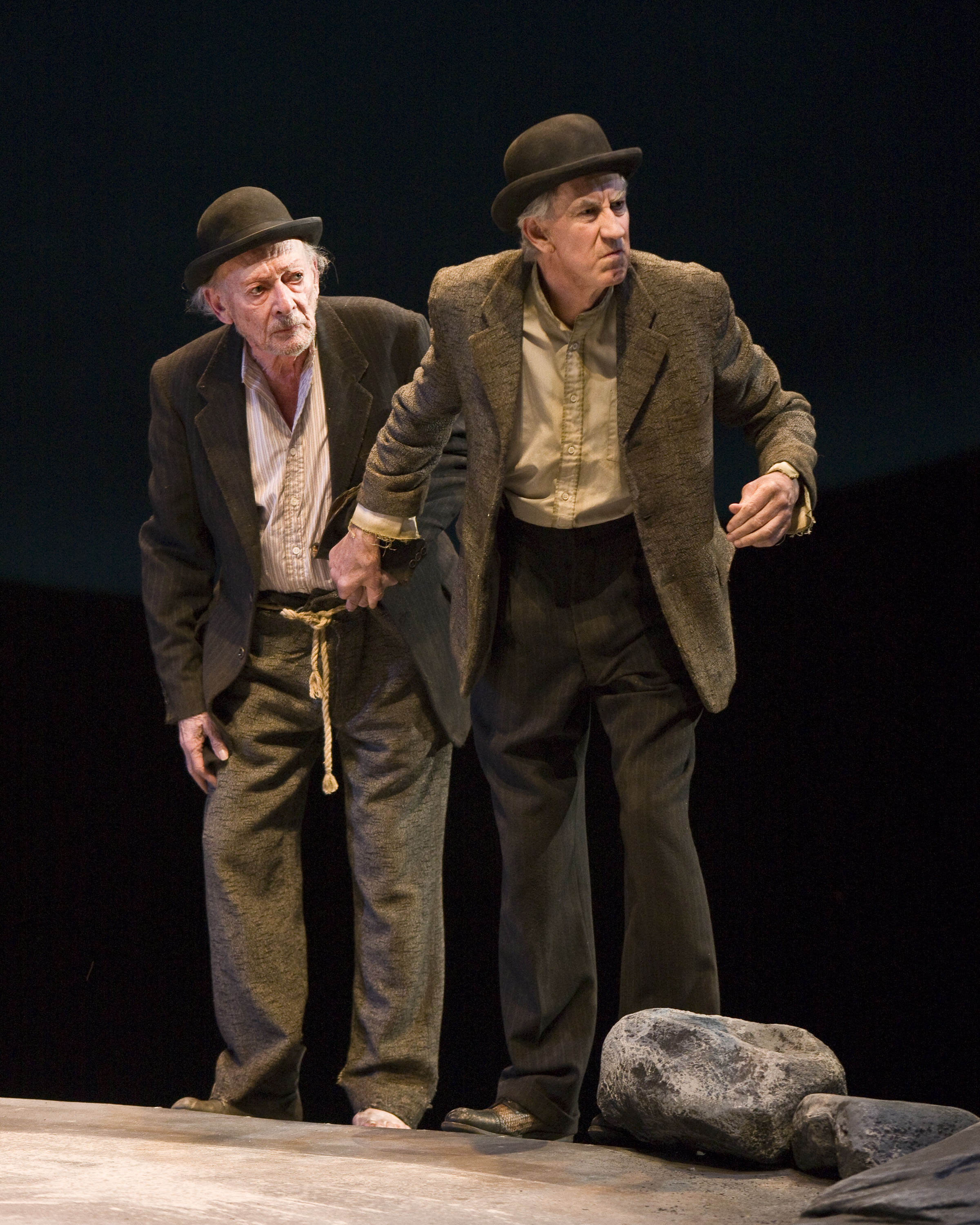

Some have seen Waiting for Godot as a reflection on this period of Beckett’s life.

Beckett’s plays got shorter and shorter until he eventually wrote a piece called Breath that lasted forty seconds and consisted of the sound of a single inhalation and exhalation of breath accompanying the rising and falling of the lights on a littered stage.ĭuring World War II, Beckett lived in southern France and was active in the French Resistance, an underground movement fighting against the German occupation of France.

Throughout his writing career, Beckett was most interested in “minimalism,” the attempt to create the greatest artistic effects with the least means possible. Waiting for Godot stunned audiences with its bare set, unusual dialogue, slight plot, and bizarre characters, but subsequent plays became even more unusual. Joyce’s erudition, esoteric word play, and elusiveness of meaning were qualities that Beckett was striving for in his own work, and when Beckett turned to drama as his major form of expression these aspects of his style intensified. For a number of years in the 1930s Beckett worked closely with the already famous Joyce as Joyce labored on his revolutionary masterpiece, Finnegans Wake. In 1928, when Beckett had taken up residence in Paris as a school teacher, he met the great Irish short story writer and novelist James Joyce, author of Dubliners, A Portrait of the Artist as a Young Man, and Ulysses. His monumental career as a playwright was born and it continued to overshadow his highly respected work as an experimental novelist. However, at the end of 1948, as a diversion from his work on a novel, Beckett wrote Waiting for Godot in less than four months and the tremendous impact of this and subsequent plays in the 1950s turned him into an international celebrity. He then sought to make his living as a writer but gained only modest success with his poetry, criticism, and prose during the 1930s and 1940s. After graduation Beckett attempted to teach school but found teaching very unpleasant.

During his school years he was more interested in athletics than in academics, but he became excited about the study of French and Italian near the middle of his university career at Trinity College, Dublin, and ultimately graduated with honors in December, 1927. Samuel Beckett was born near Dublin, Ireland, on April 13, 1906. Waiting for Godot remains the most famous example of this form of drama. Characters often engage in seemingly meaningless dialogue or activities, and, as a result, the audience senses what it is like to live in a universe that doesn’t “make sense.” Beckett and others who adopted this style felt that thisĭisoriented feeling was a more honest response to the post World War II world than the traditional belief in a rationally ordered universe. “Absurdist Theatre” discards traditional plot, characters, and action to assault its audience with a disorienting experience. Beckett’s play came to be considered an essential example of what Martin Esslin later called “Theatre of the Absurd,” a term that Beckett disavowed but which remains a handy description for one of the most important theatre movements of the twentieth century. Later translated into English by Beckett himself as Waiting for Godot, the play was produced in London in 1955 and in the United States in 1956 and has been produced worldwide. Initially written in French in 1948 as En Attendant Godot, Beckett’s play was published in French in October of 1952 before its first stage production in Paris in January of 1953. After the appearance of Waiting for Godot, theatre was opened to possibilities that playwrights and audiences had never before imagined. It revolutionized theatre in the twentieth century and had a profound influence on generations of succeeding dramatists, including such renowned contemporary playwrights as Harold Pinter and Tom Stoppard. Though difficult and sometimes baffling to read or (even) view, Waiting for Godot is nonetheless one of the most important works of our time.


 0 kommentar(er)
0 kommentar(er)
